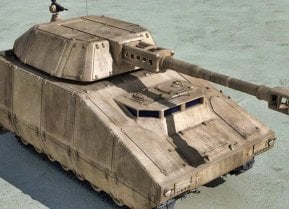Sjöormen-class Submarines Proves Not All Subs Need to be Nuclear
Each of the 1,246-ton submarines of the Sjöormen-class was powered by four 1,566 kW (2,100 shp) diesel engines and one electric motor driving a single shaft. The Hedemora Diesel generators provided a top speed of 20 knots submerged.
Sweden's Sjöormen-class Submarines Proved Cost-Effective - During the Cold War, Sweden maintained a policy of neutrality that included developing the means to ensure its independence and deter the mighty Soviet Union. As nuclear-powered submarines proved too expensive for the government of Stockholm to develop, it found a cost-effect solution to the problem of maintaining an undersea presence in its territorial waters with the Sjöormen-class (Sea Bear or Sea Serpent) of diesel-electric boats.
All five boats of the Sjöormen-class were built within a year at the Kockums and Karlskrona yards beginning in the summer of July 1968. The five boats, which included the HSwMS Sjöormen, HSwMS Sjölejonet (Sea Lion), HSwMS Sjöbjörnen (See Bee), HSwMS Sjöhunden (Sea Dog), and HSwMS Sjöhästen (Sea Horse), were the first modern type of submarines to enter service with the Royal Swedish Navy.
Each was optimized for service in the relatively confined waters of the Baltic Sea, which have long been seen as notoriously difficult to navigate. The average width of the Baltic is only about 125 miles or 200 km, while the average depth is between 330 and 650 feet (100 to 200 meters). Though the Baltic is essentially tideless, strong north-easterly winds can whip up choppy seas, which can create hazardous navigating conditions for small craft.
In addition, the shores near Sweden and neighboring Finland are heavily indented with rocky islands, while the eastern and southern shores feature dunes, sandpits, lagoons, and estuaries – all of which are far from ideal for large submarines. However, the Sjöormen-class was designed with the waters in mind.
Key Sjöormen-class Facts:
Each of the 1,246-ton submarines of the Sjöormen-class was powered by four 1,566 kW (2,100 shp) diesel engines and one electric motor driving a single shaft. The Hedemora Diesel generators provided a top speed of 20 knots submerged.
The hydroplanes of the subs were mounted on the sail, and that greatly increased the boat's underwater maneuverability, which was of greater importance in the Baltic Sea than diving depth. In addition, each of the boats' four stern planes was in an "X" configuration which further increased the maneuverability.
The Sjöormen-class featured an "Albacore" type hull that provided a good turn at speed. The hull design, which had first been employed on the United States Navy's USS Albacore (AGSS-569), is shaped like a teardrop. The emphasis of such a design is on hydrodynamic flow, and the benefits include increased speed and a smaller acoustic signature, which can make the submarine more difficult to detect. The shape also allowed for a twin deck configuration that offered ample space for the twenty-five officers and sailors, as well as their equipment.
At just 165 feet, eight inches in length and 20 feet at its beam, the Sjöormen-class wasn't large by any means. Yet the subs each were equipped with four 533mm (21-inch) torpedo tubes and two 400mm (15.8-inch) torpedo tubes for ten Type 61 anti-ship wire-guided; and four Type 42 wire-guided anti-submarine torpedoes respectively. In addition, the boats could carry up to six influence ground mines.
Electronics on the vessels included one Terma surface search radar, one low-frequency sonar, and after the 1984-95 upgrade, one IBS-A17 torpedo fire control/action information system.
Sweden to Singapore
While the submarines had been designed for service in the Baltic Sea, in the 1990s all five were sold and transferred to the Republic of Singapore Navy. During the refurbishment, the boats were prepared for tropical conditions that included the installation of air conditioning units, marine growth protection systems, and corrosion-resistant piping.
HSwMS Sjöbjörnen was the first of the boats to be transferred, and was re-launched as the RSS Challenger in September 1997. Four of the five submarines formed Singapore's 171 Submarine Squadron: with Sjöormen re-launched as RSS Centurion, Sjölejonet re-launched as RSSConqueror and Sjöhunden re-launched as RSS Chieftain; while Sjöhästen was sold and maintained for spare parts.
Two of the Challenger-class submarines – Conqueror and Chieftain are still in active service, while the other boats have been retired.
About the Author
Peter Suciu is a Michigan-based writer who has contributed to more than four dozen magazines, newspapers and websites. He regularly writes about military hardware, and is the author of several books on military headgear including A Gallery of Military Headdress, which is available on Amazon.com. Peter is also a Contributing Writer for Forbes.
All images are Creative Commons.


